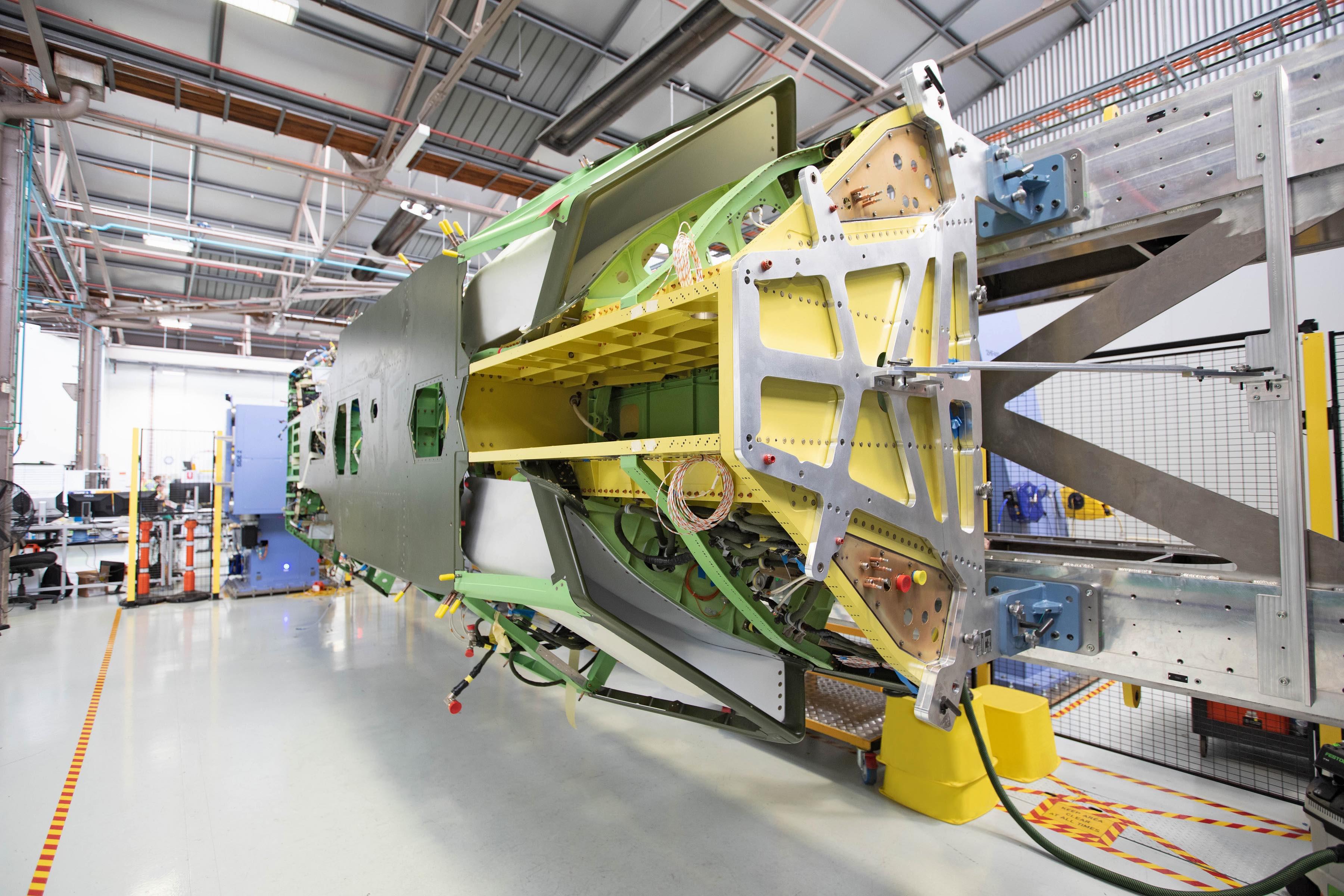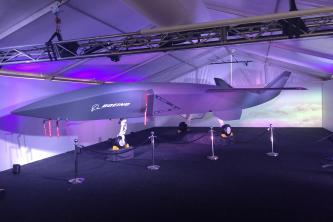
An official photograph of the first major assembly for the Boeing Airpower Teaming System (ATS) drone indicates adaptable payload spaces in an airframe of composite skin over metal substructure.
The design appears to conform with a mockup presented at the Australian International Airshow in February 2019. The type is intended to work with other aircraft, manned and unmanned and including fighters.
The ATS already was known to have volume near the center of gravity for payloads. The photograph indicates two such spaces, one in each lower corner of the fuselage under the leading edges of the wing. Large rectangular panels can be seen there. These spaces are outboard of the inlet duct.
“Customers will be able to tailor ATS sensors and systems based on their own defense and industrial objectives,” Boeing said—so these corner spaces probably are intended to be configured adaptably. The forward fuselage is full of avionics, a source close to the program said in 2019.
Since Australia has said the ATS could be armed, designers may intend the adaptable spaces to become weapon bays in a later version.
Visible in the fuselage assembly, but not in the mockup as presented a year ago, are the insides of the inlet ducts. These snake inward to hide the engine face, in the usual manner of stealth aircraft. Like the fuselage skin, lining of the ducts appears to be made of composite.
Access doors in the belly are hexagonal, a low-observability feature supplementing an airframe shape that appears intended to be highly stealthy. ATS missions must demand a level of detectability comparable with that of the Lockheed Martin F-35 Lightning, since the two types would operate together.
In 2019 Boeing kept the rear of the ATS mockup under a cover, presumably to hide the stealthy design in that area.

Program partner BAE Australia has a strong background in autonomous systems. It says it is supplying the flight management system, simulation capability, flight-control computers and navigation equipment. This gear will be allied with Boeing’s autonomous mission systems.
An aircraft such as this might be flown for only hundreds of hours, offering the potential to use a very light structure. Gauges in the fuselage assembly look normally thick, but the robustness of the overall structure probably is governed largely by maneuver loads, not fatigue life.
The inlet design, including mild bumps on the sides of the fuselage, corresponds to supersonic diverterless type, a stealth feature. This suggests the slippery aircraft may be supersonic in a shallow dive, the characteristic a valuable one in fleeing from enemy fighters.
The large fuel load for a range (perhaps ferry range) of 3,700 km (2,000 nm) probably is carried mainly or entirely in the upper fuselage and wing.






